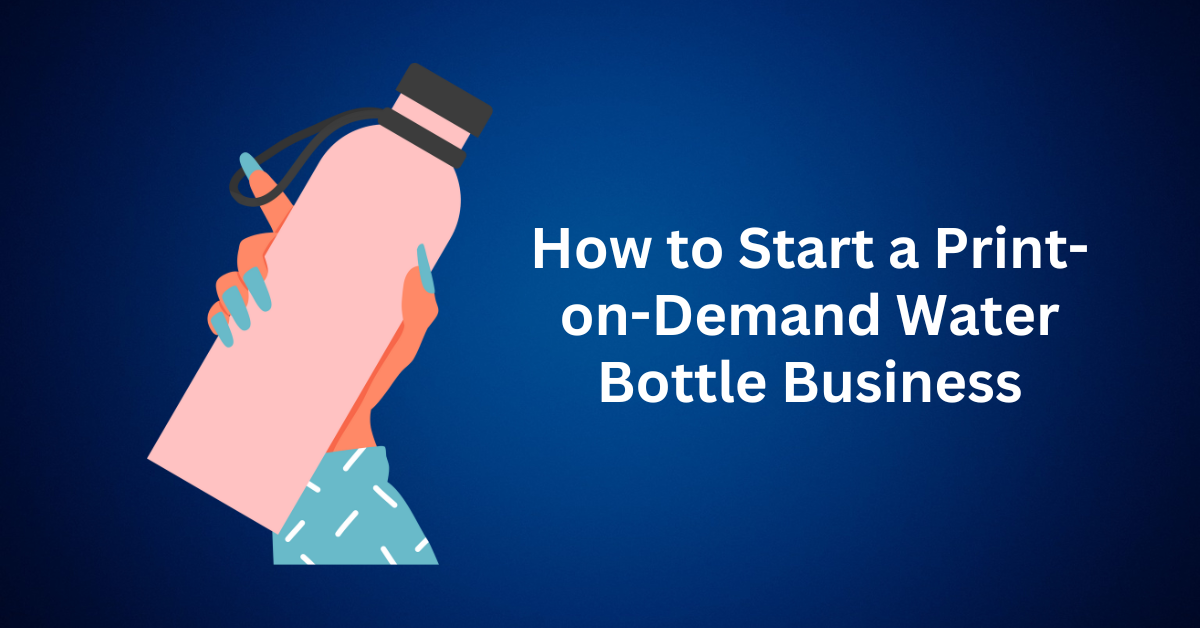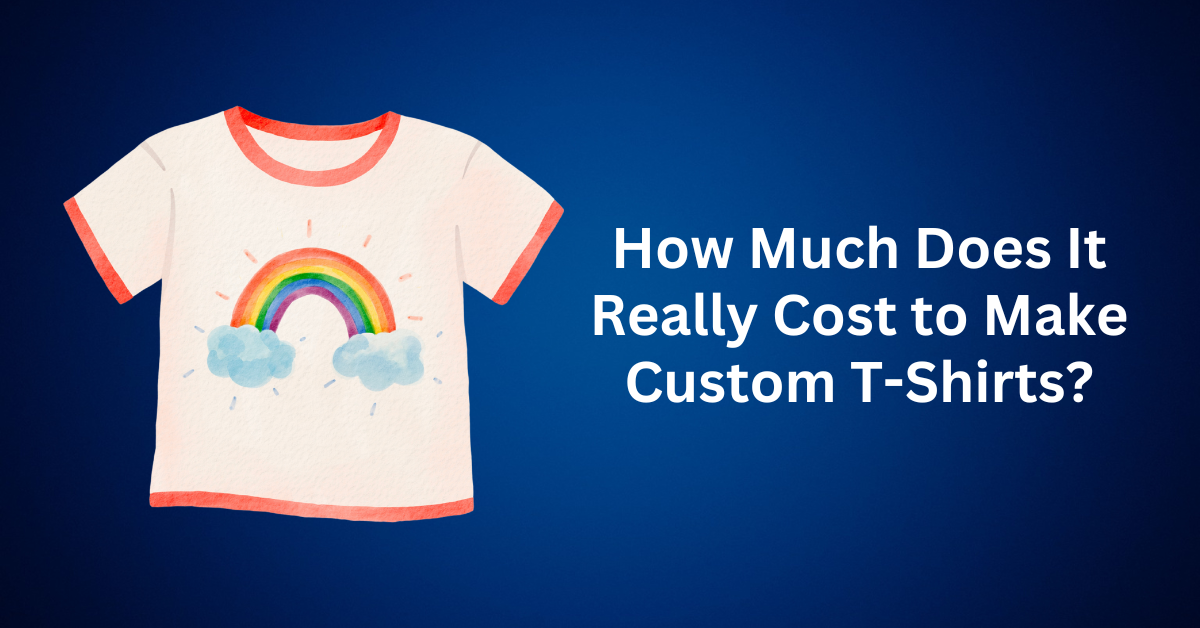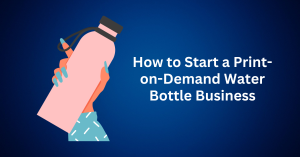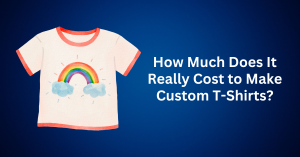Setting the right price can make or break your print-on-demand (POD) business. You might have stunning designs, a clear brand identity, and products people genuinely love but if your pricing isn’t strategic, your profits will suffer.
This guide walks you through a complete framework for pricing your Print-on-Demand products in a way that attracts customers, increases conversions, and positions your store ahead of the competition. Whether you’re launching your first product line or optimizing an existing catalog, you’ll learn how to calculate your true costs, choose a revenue-boosting pricing strategy, and use Printify’s built-in tools to refine your pricing for consistent growth.
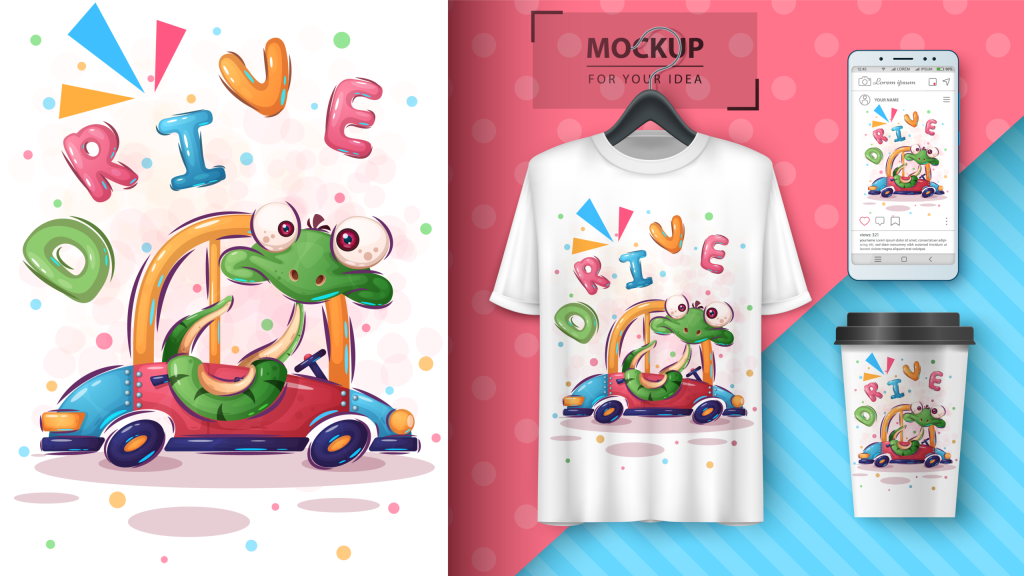
Table of Contents
ToggleUnderstanding How Print-on-Demand Pricing Works
Pricing for print-on-demand isn’t the same as traditional retail or bulk manufacturing. You’re not purchasing stock upfront, storing products, or shipping items yourself. Instead, everything is made to order, giving you flexibility but also requiring a smart, calculated approach to pricing.
Why Print-on-Demand Pricing Feels Different
Print-on-Demand eliminates the financial risk of purchasing inventory upfront, but it does come with higher per-unit production costs. Because of that, every pricing decision becomes important. Your goal isn’t simply to break even—you need prices that reflect your product quality, match your brand positioning, and still keep you competitive in a crowded marketplace.
Once you understand your cost structure and the different pricing strategies available, you gain much more freedom to scale. You can grow your shop without stressing about storage, minimum order quantities, or excess stock you can’t sell.
The 5 Core Components of Print-on-Demand Pricing
A profitable pricing strategy starts with knowing exactly what it costs to bring each product to life. Below are the key elements that influence your final retail price and your margins.
1. Base Cost
The base cost is the amount your Print-on-Demand supplier, such as Printify, charges to produce each item. This varies depending on factors like:
- Product category (apparel, drinkware, accessories, home décor)
- Size, material, and color options
- Printing method (DTG, DTF, sublimation, embroidery)
- The Print Provider you select
Because providers differ in price and print quality, using Printify’s catalog to compare base costs helps you choose options that support healthy profit margins.
2. Fulfillment & Shipping Costs
Fulfillment includes everything that happens before an item leaves the production floor. Printing, packaging, and getting the order ready to ship. Shipping costs come after that and are influenced by several factors: where your customer is located, which carrier is used, the delivery speed selected, and the weight and size of the product itself.
There are two main ways to handle shipping in your pricing:
Option A: Offer “free shipping” by rolling the shipping cost into your retail price. Shoppers love the simplicity, and this approach often leads to higher conversion rates because customers feel like they’re getting a better deal.
Option B: Charge shipping separately. This keeps your product’s base price lower on the listing and gives you more flexibility to adjust rates across different regions or shipping methods.
It’s worth testing both methods to see which one your audience responds to best. A small shift in how you present shipping can make a noticeable difference in your overall sales.
3. Platform Fees
Every eCommerce platform has its own pricing model, and those fees can add up faster than you think. Depending on where you choose to sell, you might be paying a monthly subscription, individual listing fees, or transaction and payment processing charges. All of these should be factored into your total cost when setting your prices. If you overlook them, you risk underpricing your products and cutting into your profit without even realizing it.
4. Your Markup (Profit Per Sale)
Your markup plays a major role in determining how much profit you make from every order. Many sellers begin with a 30–50% markup and then adjust it as they learn more about their market. Factors like how competitive your niche is, what customers expect to pay, how they perceive the value of your product, and even seasonal trends or promotional periods all influence where your markup should sit.
In higher-priced niches such as premium apparel or personalized gifts, customers are often willing to pay more because they associate the products with greater value. That added perception allows you to apply a higher markup without hurting demand.
5. Taxes
Depending on your region, you may need to collect sales tax, VAT, or GST. Many platforms offer automated tax settings, but it’s your responsibility to stay compliant. Make sure taxes are accounted for when calculating your total product cost.
How to Calculate Your Total Cost and Profit Margin
Once you know all the cost components, use this simple formula to determine your pricing baseline:
Total Cost Formula
Total Cost = Base Cost + Fulfillment & Shipping + Platform Fees + Taxes
Profit Margin Formula
Profit Margin = (Retail Price – Total Cost) ÷ Retail Price × 100
Running this calculation for each product ensures that you’re not guessing. You’re pricing with intention and clarity.
How to Price Print-on-Demand Products the Right Way
Pricing your print-on-demand products is more than choosing a number that “feels right.” It’s a strategic decision that affects your brand positioning, customer perception, and long-term profitability. Whether you’re selling Print-on-Demand apparel, mugs, candles, posters, or custom gifts, the right pricing strategy can help you stand out, even in crowded marketplaces like Etsy or Shopify.
Below, you’ll learn a complete, beginner-friendly system for pricing Print-on-Demand products confidently and competitively, without sacrificing margin or hurting your brand.
1. Start With Smart Competitor Research
Before you can confidently set your prices, you need a clear understanding of the market you’re entering. Competitor research gives you that foundation. It shows you what similar sellers are charging, which styles or designs are performing well, and where your brand naturally fits within the landscape.
To begin, explore major marketplaces like Etsy, eBay, Amazon Handmade, Shopify stores, and even niche POD boutiques. As you browse, pay close attention to sellers who target the same audience, offer comparable product quality, and fall within your category.
While researching, create a simple comparison list. Note the common price ranges, whether free shipping is included, the complexity of designs, personalization options, product and print quality, and the overall branding style. These details help you understand what customers already expect. Remember, the goal isn’t to copy someone else’s numbers—it’s to recognize the pricing environment your audience is used to.
A common mistake new sellers make is trying to undercut everyone else. Although it might seem like a quick way to gain attention, it usually backfires. Lower prices shrink your profit margins, signal lower quality, and push you into a race to the bottom that’s nearly impossible to win. A better strategy is to price yourself at or slightly above the market average, as long as your product and branding clearly support that value.
A helpful question to guide your decision is: “What makes my product worth the price?” Your answer will naturally lead you toward the right pricing approach.
2. Factor in What Actually Shapes Your Price
Your product is more than a hoodie or a coffee mug. In fact, it’s part of a brand experience. Pricing should reflect both tangible and intangible value.
Here are the elements that most influence what customers are willing to pay:
Product Quality
Higher-quality materials, upgraded fabric blends, and premium print methods—such as embroidery or all-over-print—naturally justify a higher price. In other words, when you’re offering something better, your pricing should reflect that value. So instead of comparing yourself to mass-produced items, lean into the craftsmanship and quality that set your products apart.
Niche Demand
People in passionate niche communities are usually willing to pay more for products that feel personal to them and reflect who they are. Pet lovers don’t think twice about spending extra on items that make their furry friends happy. Eco-friendly shoppers look for products that match their values and are often willing to pay a premium for sustainable choices. Fitness communities invest in gear and supplements that support their lifestyle, while spiritual or wellness-focused buyers value items that help them feel grounded and balanced.
When you focus on a smaller, clearly defined niche, the perceived value of your product naturally increases because it feels tailor-made for them.
Perceived Value
This is one of the easiest areas for sellers to justify higher prices. Perceived value isn’t determined by the product alone—it’s influenced by everything that surrounds it. Strong, consistent branding helps your shop feel established, while professional photos instantly signal quality. Likewise, a clean and well-organized storefront builds trust, engaging descriptions help customers visualize owning the product, and thoughtful packaging creates a premium experience before they even open the box.
Even if your product costs the same to produce as your competitors’, presenting it with a polished and intentional brand elevates how customers see it. As a result, they naturally feel it’s worth more—and they’re willing to pay more because of it.
Customer Shopping Habits
Consider how price-sensitive your audience is. Do they actively look for deals, or do they naturally gravitate toward premium brands? After all, a teenage buyer and a luxury minimalist buyer respond to pricing in completely different ways. Understanding these distinctions helps you position your products—and your prices—more effectively.
Industry Profit Benchmarks
Most POD stores aim for 30–50% profit margins, depending on the product category. However, if you’re operating in a lower-volume niche, you may need higher margins to reach your revenue goals. In this case, pricing strategically becomes even more important to balance both demand and profitability.
There’s no universal rule. Your pricing should reflect your overall brand, not just your costs.
3. Choose a Pricing Strategy That Fits Your Brand
Once you know your costs and understand your competitors, it’s time to select a pricing strategy. There’s no single best approach. Different strategies work better for different audiences and product types.
Cost-Plus Pricing (Simple and Reliable)
With this approach, you simply total up your costs, add your markup, and that becomes your retail price. It’s straightforward and especially helpful for beginners because it provides clear structure and predictable profits. However, the downside is that it doesn’t consider how customers perceive your product or how competitive your market might be.
Even so, this method works best for new sellers who want a simple, no-guesswork way to price their items while they get comfortable with the basics.
Value-Based Pricing (Charge What Your Product Feels Worth)
This method focuses on what the customer perceives the product is worth, rather than how much it costs to produce. As a result, it works especially well for brands with a strong identity or for products that carry emotional or aesthetic appeal. Unique designs, premium niches, and anything that feels “special” tend to perform particularly well with value-based pricing.
Because you’re charging based on perceived worth, not materials, it often gives you the highest profit margins.
It’s best suited for stores with clear branding, a strong message, or products that connect with customers on a deeper level.
Competitive Pricing (Stay in the Market Range)
With this approach, you price your product close to what others in your niche are charging. It’s a low-risk strategy, especially useful when you’re entering a crowded market and don’t want to scare away potential buyers. It also works well for trending designs where customers already have a sense of the “normal” price.
This method is ideal when you’re testing new products or trying to gain traction in popular, competitive categories.
Penetration Pricing (Gain Traction Quickly)
With this strategy, you begin with lower prices to attract early buyers, build trust, and collect those first important reviews. As your store gains momentum and social proof, you slowly increase your prices to match the value you’re offering. It’s a quick way to grow and especially helpful for brand-new shops that need to overcome initial trust barriers.
This approach is best for new sellers who are launching their first products and want to build credibility fast.
Psychological Pricing (Subtle but Effective)
Prices like $24.99 convert better than $25.00.
Small differences can boost conversions without cutting into profits.
Best for: Price-sensitive shoppers, retail-focused niches.
Dynamic or Seasonal Pricing (Flexible & Data-Driven)
Adjusting your prices based on the season can make a big difference. During peak months like holidays, gifting seasons, or times when demand naturally spikes, you can raise your prices to maximize profit. When things slow down, you can lower prices or run promotions to keep sales moving. This approach gives you room to offer discounts, clearance deals, and limited-time offers without hurting your margins.
It’s a great strategy for shops that sell holiday items, seasonal designs, or trend-driven products.
Pro Tip: The most successful POD brands don’t rely on just one method. They mix and match using value-based pricing year-round, penetration pricing when launching new collections, and psychological pricing for everyday sales.
4. Refine Your Prices With Real Data (Not Guesswork)
Pricing isn’t a set-and-forget task. The best POD sellers review their numbers and make adjustments over time.
Here’s what to monitor:
Track Conversion Rates
If people click your listing but don’t buy, something is off. It could be:
- Price too high
- Perceived value too low
- Competitors offering more
Even a $1–$3 change can move conversion rates significantly.
Review Sales Performance
Some products naturally perform better than others.
If a high-quality item isn’t selling, your pricing or presentation might need adjustment.
Use Analytics Tools
Your eCommerce platform and Google Analytics can show:
- Where buyers drop off
- Which listings convert the best
- What happens when you test different prices
Printify users can tweak retail prices inside the My Products dashboard and sync changes instantly to their store.
Listen to Customers
Feedback, comments, and reviews often hint at whether your pricing matches expectations. Phrases like “worth the price” or “a bit expensive” are valuable data points.
Experiment with Advanced Pricing Tactics
As your store grows, test:
- Product bundles
- Volume discounts
- “Buy more, save more” tiers
- Limited-time promotions
- Free shipping thresholds
Even small adjustments can dramatically increase your average order value and profit per sale.
4 Expert Tips for Building the Perfect Print-on-Demand Pricing Strategy
Pricing your print-on-demand products isn’t just about covering costs. It’s about positioning your brand, influencing customer perception, and maximizing profit potential. If you want a pricing strategy that consistently performs, these four proven principles will help you build a stronger foundation and scale confidently.
1. Elevate Perceived Value (So Customers Happily Pay More)
Customers don’t judge value based on cost alone. They look at the entire experience surrounding your product. This is why two sellers can offer the same T-shirt, yet one sells it for $18 while the other sells it for $34 and still gets more orders.
Perceived value comes from the overall presentation of your brand, including:
- High-quality product photography and lifestyle imagery
- Polished, professional mockups
- Clean, modern product pages
- Well-written descriptions that tell a story
- Consistent branding across your story
The more premium your store feels, the easier it becomes to justify higher price points. However, if you’re asking customers to spend more, it’s important to guide them through the “why.” By showing the craftsmanship, highlighting the materials, and building a visual and emotional experience, you can clearly set your products apart from low-cost alternatives.
Even small improvements can make a big difference. For example, upgrading your photos, enhancing your storefront design, or adding richer descriptions can instantly elevate your perceived value. As that perception rises, you’ll find it much easier to maintain stronger profit margins without facing pushback.
2. Price Each Product Category With Intention
One of the biggest pricing mistakes POD sellers make is applying the same markup to every product in their store. Different items come with different buyer expectations, base costs, and profit potential so each one deserves its own strategy.
Here’s a smarter way to think about it:
Products that can carry premium prices
Heavyweight hoodies, embroidered pieces, canvas wall art, and higher-end home décor naturally support higher price tags. Customers already see these items as durable, exclusive, and worth paying extra for. Because of that, you can apply a larger markup without hurting your conversion rates.
Products that work better at lower price points
Mugs, stickers, tote bags, and basic T-shirts often sell best when they’re affordable. These products move in volume, do well in bundles, and appeal to impulse shoppers. Keeping the markup modest can help you increase the number of orders, especially in trending or casual niches.
When you browse Printify’s catalog, compare the base costs within each category. From there, choose a pricing strategy such as:
- Higher margins for premium, high-quality goods
- Lower margins for fast-moving, high-volume items
This kind of balanced approach spreads your revenue across your catalog and helps you stay both competitive and profitable.
3. Use Promotions Thoughtfully
Discounts are powerful, but when overused, they can weaken your brand and train customers to wait for sales. Instead of running endless markdowns, use promotions with intention and purpose.
Here are smarter discount strategies that actually increase profits:
Free Shipping Thresholds
Encourage customers to spend more by offering free shipping on orders above a certain value. This simple incentive naturally pushes buyers to add extra items to their cart, increasing your average order value without requiring you to lower your product prices.
Product Bundles
Pair complementary items—like mugs with stickers or T-shirts with hoodies—to naturally increase cart size. Bundling works because customers feel like they’re getting more value, all without requiring deep discounts or cutting into your margins.
Limited-Time Sales
Short-term promotions create urgency and convert hesitant shoppers. Use them during holidays, new product launches, or peak sales periods.
Avoid Over-Discounting
If every product is always “on sale,” the discount loses meaning and your regular price no longer feels credible.
Strategic promotions help boost sales while protecting your brand’s long-term perceived value.
4. Analyze, Test, and Adjust Your Prices Regularly
Even the strongest pricing strategy isn’t something you set once and forget. Markets shift, competitors pop up, and customer expectations change over time. To stay ahead, you’ll want to watch your numbers closely and let real data guide your decisions.
Start by paying attention to your conversion rates. If traffic is coming in but sales aren’t following, it could mean your pricing doesn’t reflect the value customers expect. Keep an eye on your best-selling products as well. If certain items consistently fly off the shelves, that’s often a sign they can support a small price increase without hurting sales.
Customer feedback is another goldmine. Comments about price, value, or quality often reveal gaps you might not otherwise notice. And don’t forget your analytics tools. Your store dashboard and Google Analytics can show exactly how pricing adjustments affect traffic, behavior, and sales performance.
From there, embrace experimentation. Test slightly higher prices on premium items, try volume discounts for more budget-friendly products, or adjust prices on your top performers to see how demand responds. Seasonal promotions are also a great way to boost momentum during peak periods.
Sometimes even a tiny, almost unnoticeable price tweak can make a significant difference in your monthly revenue. Keep refining, stay curious, and let your data lead the way.
How to Start a Print-on-Demand Business With Printify
If you’re looking for a low-risk way to launch an online business, Printify is one of the most powerful platforms to help you get started. It allows you to design and sell custom products without buying inventory, managing stock, or handling shipping yourself. Everything is made to order, giving you the flexibility to grow at your own pace and build a brand that truly reflects your vision.
Whether you want to earn extra income or turn Print-on-Demand into a full-time business, Printify gives you all the tools and integrations you need to launch quickly and scale confidently.

Printify is one of the industry leaders in print-on-demand, known for its global network of Print Providers, competitive base costs, and beginner-friendly workflow. Because the platform handles production and fulfillment, you can focus on the parts that matter most. Creating designs, building your brand, and serving your customers.
Key advantages include:
- No upfront investment or inventory risk
- Access to 80+ Print Providers across the world
- Transparent, competitive base pricing
- Automated fulfillment from order to delivery
- Seamless integrations with major eCommerce platforms
With Printify as your backend production partner, you can offer high-quality products while keeping your business lightweight and easy to manage.
How to Start Your Print-on-Demand Business With Printify
Launching a POD brand with Printify is incredibly simple, even if you’ve never created an online store before. Here’s a step-by-step breakdown of how the process works:
1. Choose Your Product
Browse Printify’s extensive Catalog of over 1,300 customizable products, including:
- T-shirts and hoodies
- Drinkware
- Home décor
- Stickers and accessories
- Wall art
- Bags, hats, and more

Explore different categories, compare providers, and select the product that best fits your niche and brand style.
2. Add Your Design
Upload your artwork or create something completely new right inside Printify’s Product Creator. From the moment you open it, the tool feels intuitive and easy to navigate. You can quickly place, resize, and adjust your graphics, and as you make changes, the real-time preview lets you see exactly how everything will look. Beyond that, you can instantly generate clean, professional mockups and even produce multiple variations for your shop with just a few clicks.
Even better, you don’t need advanced design experience to jump in confidently. In fact, in the print-on-demand world, simple and clean designs often outperform complicated ones. With that in mind, start with whatever feels natural to you—because more often than not, less truly is more.
3. Set Your Pricing Strategy
After selecting your product and Print Provider, it’s time to set your retail price. This is where you apply the pricing strategy that fits your store, whether it’s value-based, competitive, premium, or volume-driven.
Printify displays the base cost of each item up front, helping you calculate your profit margins before publishing.
4. Connect Your eCommerce Store
Printify integrates seamlessly with top-selling platforms, including:
Once connected, your products sync automatically to your storefront. When a customer places an order, Printify receives it instantly and starts producing it right away.
5. Publish and Start Selling
Once your products are set up and synced, you can publish your listings and start selling right away. The process after that is hands-off: your customer places an order, Printify sends it to the most suitable Print Provider, and everything from production to packaging to shipping is taken care of. You simply collect the profit from each sale.
No shipping labels. No inventory. Just design, list, and grow.
Printify’s global network, automation features, and low barrier to entry make it one of the easiest ways to launch an online business. Whether you’re testing a small idea or building a full-scale brand, the platform adjusts to your needs. With competitive base costs, a wide range of products, and fulfillment handled in the background, you’re free to focus on what actually moves the needle: marketing your store, creating better designs, and connecting with your customers.
Final Thoughts: Pricing Smart Is the Key to Long-Term Print-on-Demand Success
At the end of the day, pricing is so much more than plugging numbers into a formula. Instead, it’s a strategic choice that influences how customers perceive your brand and how quickly your business can grow. In reality, the Print-on-Demand sellers who thrive aren’t the ones guessing or undercutting competitors—they’re the ones who understand their costs, know their audience, and continuously fine-tune their approach.
With that in mind, keep these core principles front and center:
- Know Your True Costs From Start to Finish
Profitability begins with clarity. When you break down every expense—from base cost and shipping to fees, taxes, and packaging—you’ll gain the confidence to set prices that protect your margins and support long-term growth. - Build and Elevate Perceived Value
Customers buy more than just a product; they buy the experience around it. Strong visuals, thoughtful design, engaging descriptions, and cohesive branding all boost perceived value. When that value is unmistakable, higher price points feel natural and justified. - Treat Pricing as a Constant Experiment
eCommerce never stands still. Trends shift, competitors adjust, and customer expectations evolve. Your pricing should evolve too. By tracking analytics, testing new price points, offering seasonal promotions, and listening to feedback, you can create small but meaningful improvements that compound over time.
Ultimately, platforms like Printify make this entire process easier with transparent base costs and a global production network that helps you stay competitive. With a thoughtful strategy and data-driven decisions, you can build a Print-on-Demand business that’s not just profitable today—but scalable and sustainable for the long run.

